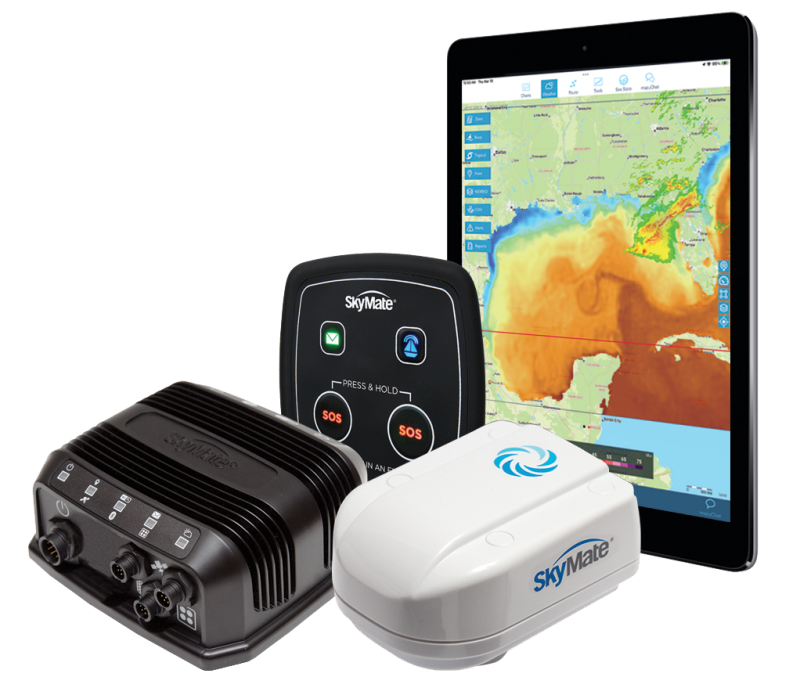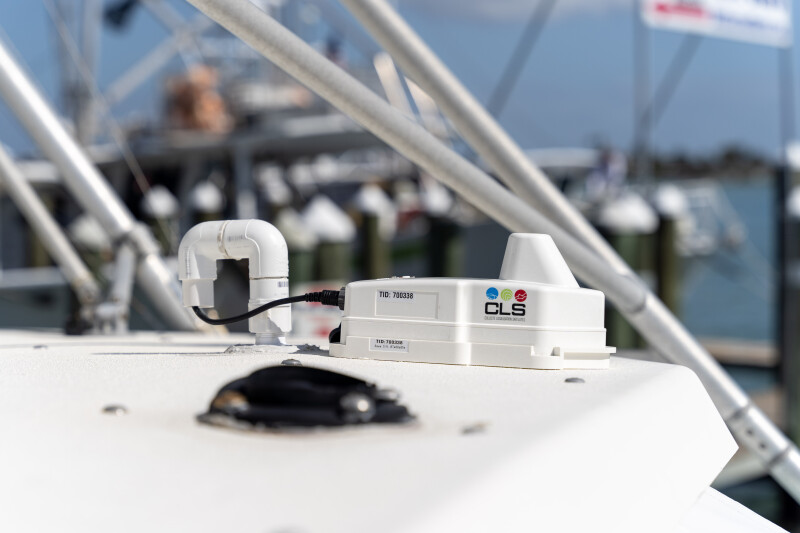The National Oceanic and Atmospheric Administration introduced Vessel Monitoring Systems, referred to simply as VMS, as part of its fisheries management toolset in 1994, in the Pacific Islands. By 2005 all NOAA management regions had some VMS requirements in place. Since then, the hardware and its capabilities have continued to develop as fishermen and fisheries managers make use of systems for data collection and analysis.
“Programmatically, in 2007 NOAA Fisheries’ VMS Program was centralized into a nationally headquartered program in Silver Spring, Maryland, which coordinates with five divisional program offices around the country,” says Kelly Spalding, the VMS program manager at NOAA.
Spalding notes that while early units collected GPS data and transmitted it when in contact with a satellite signal, most VMS units now maintain constant contact with satellites and send data in nearly real-time.
“In 2020, NOAA Fisheries adopted new regulations that allow for cellular-based VMS units to be federally tested and approved, meaning they can be used in fishery management plans,” says Spalding. She notes that using cellular connectivity can significantly reduce the cost of VMS compliance.
A number of VMS hardware suppliers have been approved by NOAA, among them, SkyMate and Woods Hole Group — two companies that are expanding their equipment capabilities and finding niches that serve the various sectors of the commercial fishing industry.

“What’s new for us is our M1600,” says Craig Myers, product manager at SkyMate. “It’s type approved in all fisheries management regions and has a number of new features, including weather, email, texting, and sea surface temperature charts. It’s also compatible with iPad and Android tablets.” He also points out the unit’s small footprint and low power draw.
Myers points out that NOAA will reimburse buyers up to $3,100 for their first VMS purchase. “And we offer the lowest cost monthly service, $20 to $40 a month,” he says.
According to Myers the M1600 is designed for DIY installation, but units must be professionally installed in order to qualify for reimbursement.
Woods Hole Group, the U.S. division of CLS, a global VMS company, is offering two units. The company’s full-size Triton, offers numerous additional capacities. The new NEMO is an all-in-one unit that takes advantage of NOAA’s new regs allowing use of low-cost cellular data transmission. Designed for the increasing number of fisheries with VMS requirements, particularly the Gulf of Mexico for hire fleet that will now have to provide NOAA with catch reports and VMS data, enabling the agency to better gauge the recreational fishing’s impact on stocks.
“The Triton has been our flagship product for the last five years,” says Nick Salvi, VP of sustainable fisheries at Woods Hole Group. “NMFS is tracking about 4,500 vessels with our units on roughly half of them.”
The Triton connects to an Android tablet populated with the company’s exclusive software that like the SkyMate, turns what was once solely a position monitor into a full-service communication device that in many ways eliminates the need for any other satellite communications device.
“We build all your catch reporting forms in-house and you can submit those, send emails, and maintenance requests, whatever you need,” say Salvi. “It’s our most robust platform.”
The Nemo targets an emerging market. “The NEMO is the first of its kind,” says Jason Surma, Woods Hole Group’s business development manager. He points out that at $500, the NEMO is a fraction of the cost of the Triton, it can pair with any cellphone or tablet and can operate on 100 percent on cellular.
“Once you are out of cellular range, the NEMO will continue collecting and datalogging vessel positions. It will then bulk transmit them as soon as you are back within range,” he says.

Nemo is the first all-in-one system specifically designed for monitoring and protecting small-scale fisheries. NEMO offers hybrid global connectivity, using GPRS/IoT networks in coastal areas and automatically switching to satellite systems when the vessel moves outside the range of terrestrial networks.
Services range from basic delivery of data collected and processed in CLS’ data center, data integration with client’s fisheries monitoring center, and access to CLS’ web platform for data visualization, alert management, and customized analytics.
Surma notes that as VMS hardware evolves, more fishermen and regulators are utilizing the systems’ information and communication capabilities. “Regulatory bodies and fishermen are seeing the value of these as far as the information they can collect,” he says, noting that the number of users will continue to increase.







